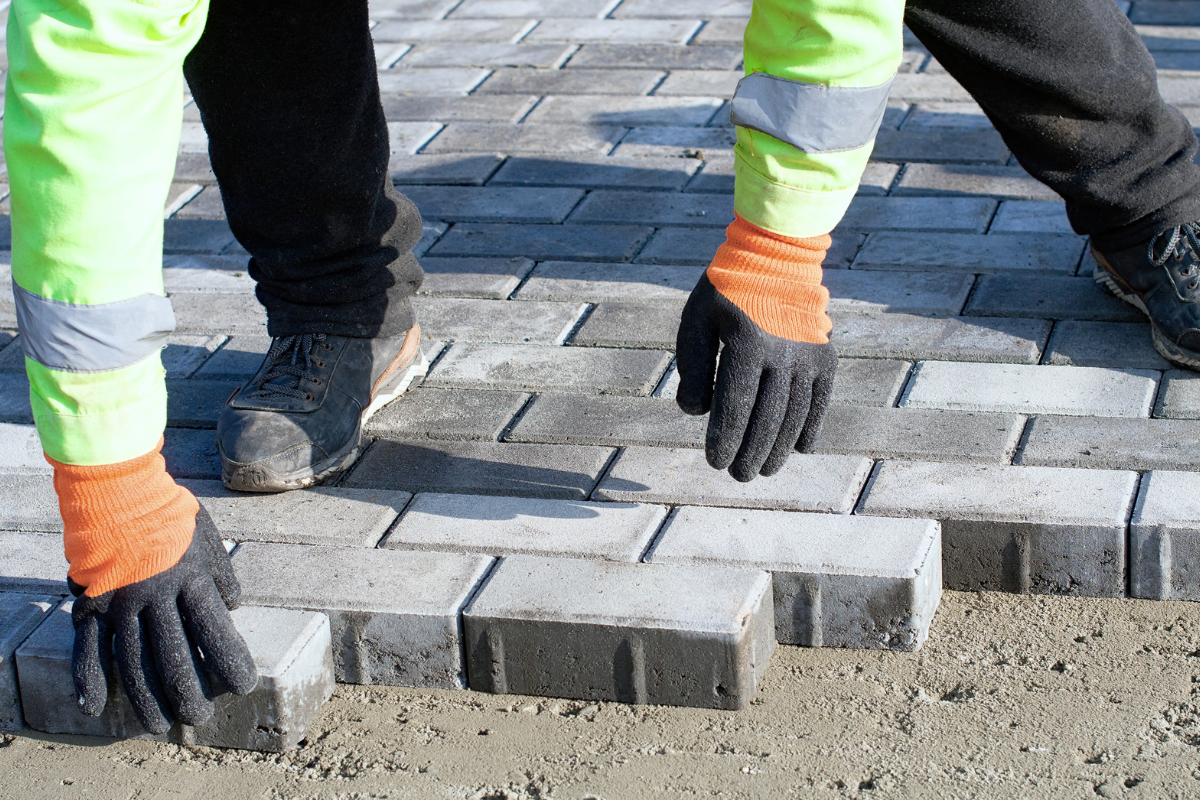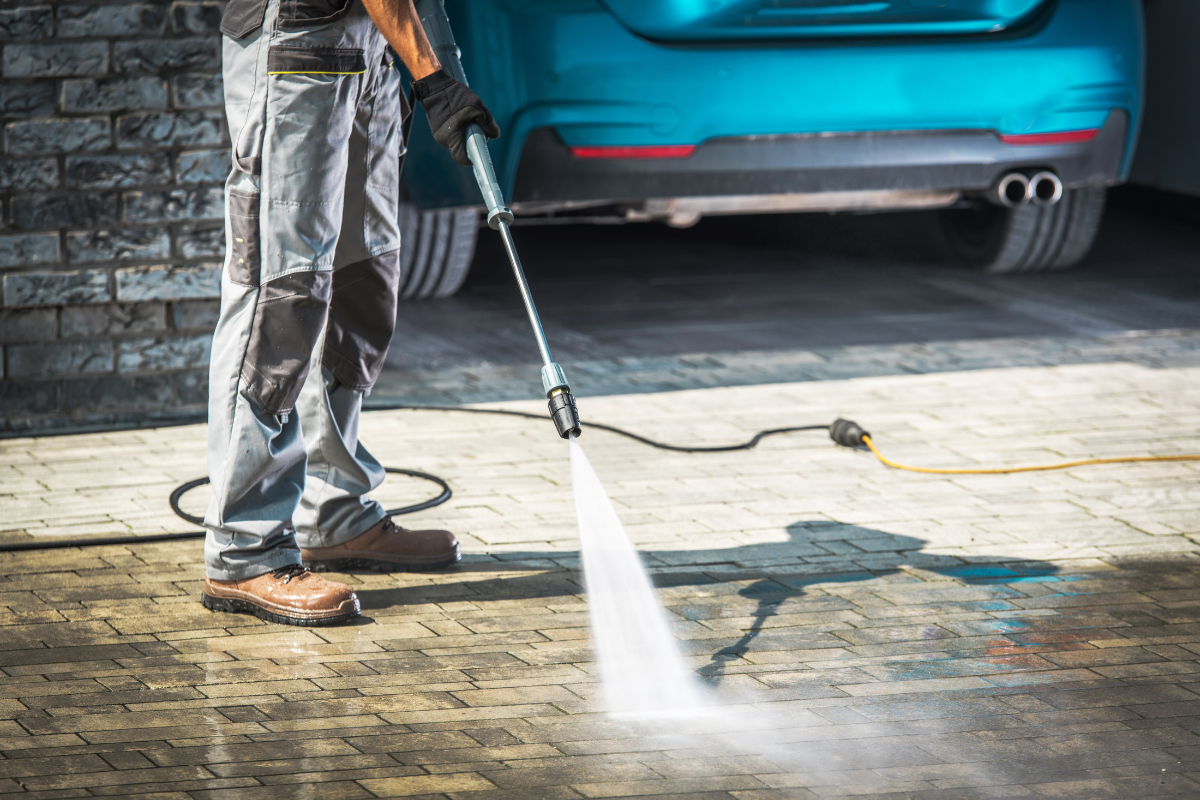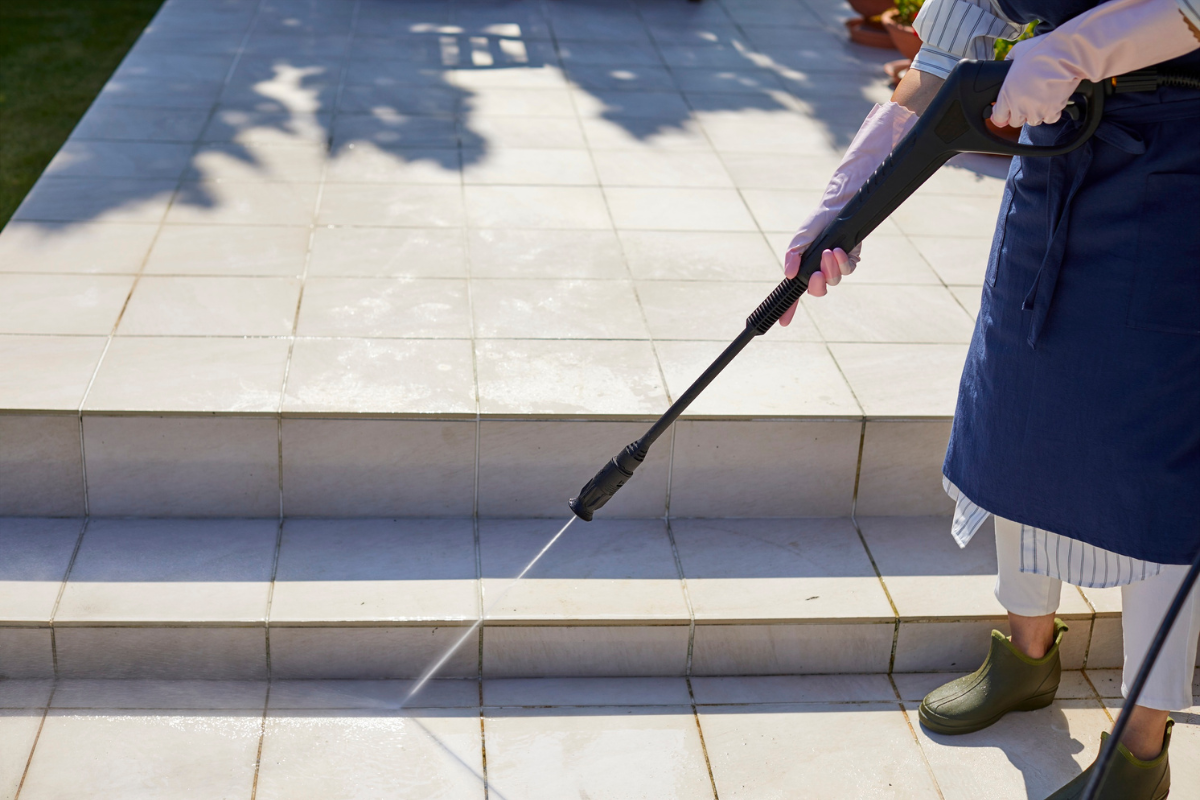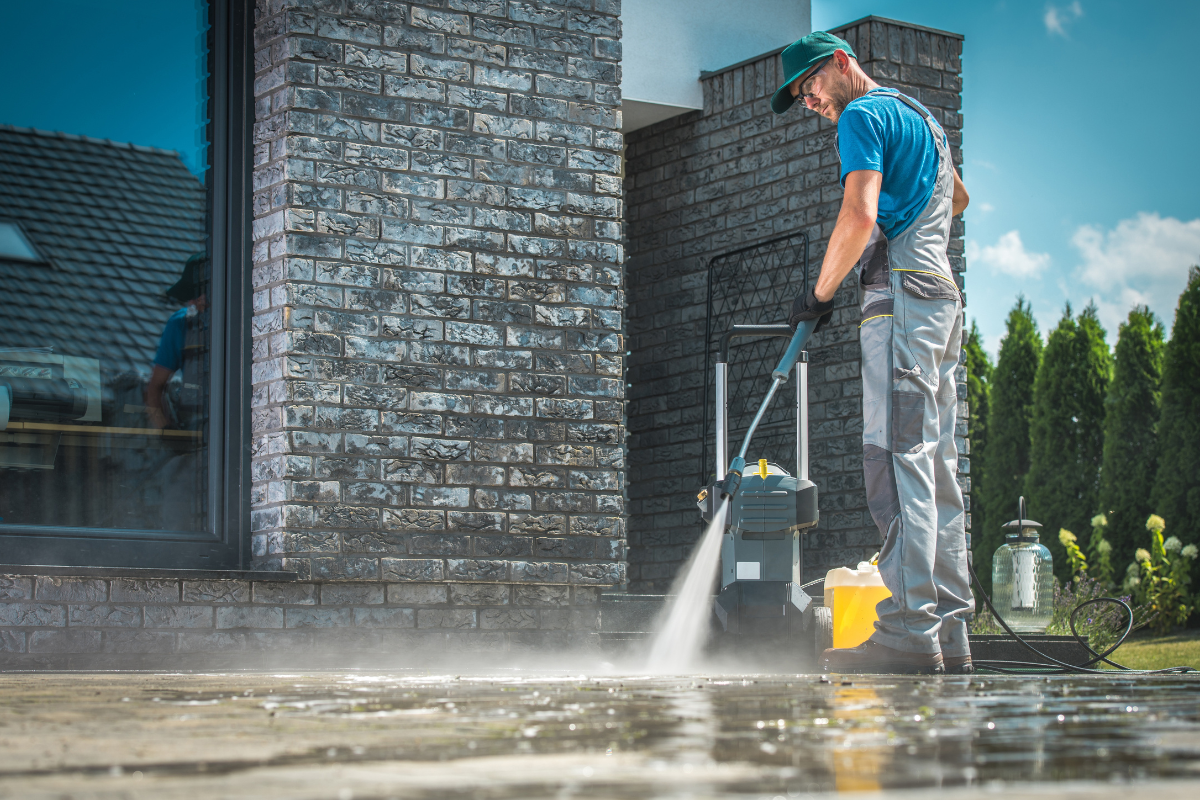
Paver Sealing Near Me: What Professional Services Include



There’s a big difference between spraying a shiny coat on a driveway and executing a proper paver sealing job. The first looks good for a season. The second protects your investment for years, resists stains and weeds, keeps color from fading, and makes cleaning far easier after summer cookouts or a week of oak pollen. When homeowners search paver sealing near me, they’re often trying to separate quick splash-and-dash outfits from companies that understand substrate, chemistry, and climate. The good providers lead with preparation, not product.
I have spent enough early mornings around wet sand and buzzing machines to appreciate the rhythm of a proper wash and seal. The details matter. Skipping one step can shorten the life of a seal by half, sometimes more. What follows is a clear look at what professional services usually include, how to evaluate them, and where the trade-offs hide.
What paver sealing actually does
Think of a paver sealer as a breathable jacket for concrete or clay pavers. The goal is to block contaminants and UV, stabilize joint sand, and make maintenance simple. The right film thickness changes how water, oil, and dirt behave on the surface. Instead of soaking in and darkening the pavers, liquid tends to bead and buy you time. On a driveway, that means hot tire marks have a harder time imprinting. On a pool deck, sunscreen and leaf tannins are less likely to stain.
Sealers come in several chemistries, each with their own quirks. Solvent-based acrylics bring strong color enhancement and quick return to service, but they can trap moisture if the base wasn’t dry or if the pavers are dense and non-absorptive. Water-based acrylics and urethane blends tend to breathe better, a smart choice in humid regions where afternoon storms and high groundwater make drying unpredictable. Penetrating sealers, often silane or siloxane based, create a hydrophobic barrier within the capillaries. They won’t give you the wet look, but they resist efflorescence and keep the surface natural, which some clients prefer on tumbled travertine or in HOA-restricted neighborhoods.
A good contractor doesn’t lead with a product label. They start with your pavers, your microclimate, and the way you use the surface. A heavily parked driveway needs abrasion and hot tire resistance more than gloss. A shaded patio under a live oak needs tannin defense and mildewcide. If you look up paver cleaning Lutz or similar local searches, you’ll see companies that talk about Florida-specific issues like polymeric haze, efflorescence blooms after heavy rain, and algae film. Local context matters.
The anatomy of a professional service package
Most crews sell “washing and sealing” as a single service, but it’s a series of tightly linked stages. Done well, each stage sets the next up for success.
Site evaluation and test spots
On the first visit, a seasoned technician will walk the site, check for drainage, look at shading, and note any downspout splash zones or sprinkler overspray. They’ll identify paver type and age. Factory-sealed pavers or those with unknown previous coatings call for a test panel. One square yard can tell you how the paver will darken, whether the sealer flashes off too fast, and if previous coatings need stripping. I recommend requesting a small test area near a curb or side path so you can see enhancement in your own light conditions. Photos in brochures never match a particular yard.
They’ll also ask about timelines. If you need driveway access by the next morning, some products are out. If you have a party on Saturday, a crew might phase the work so walking areas cure first, then the driveway.
Deep cleaning and stain treatment
“Pressure washing” is shorthand. The best results come from pairing controlled pressure with the right chemicals and dwell time. A flat surface cleaner looks like a disc on a wheeled frame that spins twin jets beneath a shroud. It cleans evenly without zebra striping. On most residential driveways, technicians set machines in the 2,500 to 3,500 psi range with flows of 4 to 8 gallons per minute, adjusted for paver hardness and joint condition. The goal is to lift grime without blasting out joint sand or etching the face.
Oil stains, rust from irrigation, and tannins from leaves need targeted chemistry. Rust removers are usually oxalic or a proprietary blend safe for masonry if used correctly. Oil needs a degreaser, often an alkaline cleaner with surfactants, and sometimes a poultice for old drips. Organic staining responds to sodium hypochlorite solutions that kill mildew at the root. Experienced crews pre-treat, then agitate with a brush, then rinse with the flat surface cleaner. Shortcuts leave shadows that become more obvious after sealing.
If the phrase driveway pressure washing near me brought you here, take note: not every pressure washing service is prepared for paver-specific challenges. Etched circles around a stain or waves at the edges of passes can telegraph through the sealer and become permanent highlights. Ask whether the tech uses a surface cleaner on pavers rather than a wand alone, and whether they bag and remove displaced sand instead of washing it into storm drains.
Weed removal and joint prep
Weeds don’t grow from the joint sand itself; their roots feed from organic matter below and light at the top. Crews will clear visible growth with a combination of pressure, a turbo nozzle at low stand-off, and sometimes a safe herbicide. The idea is to extract, not just shear at the crown. After cleaning, joints dry shallow. The next steps depend on your chosen joint material.
Traditional silica sand can be swept in after drying. It is inexpensive and easy to top up later. It does not lock up hard. In windy areas, or where ants are active, it can wash out. Polymeric sand, which contains binding agents, firms up after misting and cures into a semi-solid that resists washouts and weeds better. The trade-off is sensitivity. Applied to damp joints or over dusty surfaces, polymeric sand can create a white haze glued to the paver face. It takes care to blow off dust completely and to respect light misting protocols. If a contractor recommends polymeric sand, ask stain removal how they manage cure time and what they do if a haze develops.
Drying time and moisture checks
Sealing over moisture is the fastest way to get milky blush, peel, or trapped efflorescence. Crews that know their craft check the base. In humid places, pavers can look dry but still hold water a few millimeters below. A basic moisture meter works on wood, not stone, but infrared thermometers and simple absorbent mat tests can help. In warm, breezy weather, a cleaned driveway may be ready the same afternoon. After a deep cleaning on a shaded patio, waiting until the next day may be smarter. When clients search paver sealing near me and want same-day service, I explain that waiting 12 to 24 hours can add years to the coating. Most appreciate the honesty.
Sealer selection and application method
This is where experience earns its keep. A contractor chooses a paver sealer that matches your goals. If you want enhanced color without gloss, a low-sheen acrylic or a penetrating sealer makes sense. If you prefer a glossy look, they might select a high-solids acrylic or a urethane-modified option for better mar resistance. Around pools, slip resistance matters more than shine. Many products allow traction additives mixed into the second coat.
Application methods vary. Low-pressure airless sprayers lay down an even film quickly, ideal for large driveways. Back-rolling sets the sealer into texture and avoids lap lines, especially on textured stone. On clay pavers with high absorption, two lighter coats reduce the risk of solvent entrapment. On dense, factory-coated pavers, a single thin coat may be all they’ll accept. A pro watches edges, drains, and low spots. Puddled sealer turns cloudy. Any drips on adjacent surfaces are wiped immediately, because cured acrylic on garage doors is no one’s idea of a good day.
A detail that separates careful crews from the rest is edge management. Where pavers meet grass, they run a shield to prevent herbicide burn or sealer overspray. Where pavers meet stucco, they mask the first course or maintain a clean line with a shield board. Landscaping gets covered, especially delicate foliage.
Cure management and access
Most water-based sealers accept foot traffic after 2 to 4 hours in good conditions, and light vehicle traffic after 24 to 48 hours. Solvent-based coatings often dry to the touch faster but still need time to harden. Temperature and humidity stretch those ranges. Communication here keeps everyone happy. I leave simple markers at the driveway edge and text clients when to move cars. If a storm is forecast, we adjust, even if that means pushing a day. Rushing into a rain cell can force moisture through uncured sealer and cause blushing.
Final inspection and maintenance briefing
A quick walkthrough sets expectations. Some darkening along joints is normal when sand is freshly wet from sealing. This evens out as the sealer cures and the joint sand equilibrates. I point out any stains that didn’t fully release and explain why. Some oil pulled deep into concrete won’t disappear entirely, but it doesn’t continue to spread. I also leave maintenance notes: avoid harsh acid cleaners, skip high heat on pressure washers, and use residential pressure washing a gentle pH-neutral soap for routine washing. If a client uses a pressure washing service later, I recommend they cap pressure around 1,500 to 2,000 psi with a wide fan tip to protect the coating.
Common pitfalls and how pros avoid them
I keep a mental file of avoidable problems. They recur when crews chase speed, not quality.
Polymeric haze is at the top of the list. It happens when dust sits on the paver face and gets activated by water, bonding to the surface. You prevent it by thorough sweeping and blowing, by keeping the surface bone-dry except for the light misting the product instructions prescribe, and by stopping if clouds roll in. Fixing haze later often means light acid washes and careful agitation. Better to avoid it entirely.
Efflorescence looks like chalky white bloom. It’s salt migrating from the concrete to the surface as water evaporates. If you trap it beneath a film-forming sealer, it shows through. Clearing it before sealing can take a specialty efflorescence cleaner and time to dry. When pavers sit on new concrete slabs or build sites with high groundwater, I urge patience. Waiting an extra few weeks reduces the chance of a big bloom.
Over-application leads to peel, scuffing, and a plastic look. Two light coats nearly always outperform one heavy one. Dense clay pavers often need an even lighter hand. The difference is subtle at application, glaring three months later when hot tires lift thick film at the tire path.
Mismatched products over old coatings can fail fast. Water over solvent can be fine, solvent over some water-based films can re-emulsify them. If a contractor can’t identify the previous product, they should test or strip. Stripping is its own messy art, requiring safe containment and plenty of rinse water. I only recommend it when the existing film is failing or so discolored that anything on top will look wrong.
Pricing logic and what you’re paying for
When homeowners compare quotes, they see square-foot rates that can vary by 40 percent or more. Lower bids often skip steps or use bargain products cut with too much solvent or water. A fair price covers labor for two site visits in many cases, the right cleaning chemistry, enough man-hours for careful joint work, and a premium paver sealer that runs more per gallon but lasts longer and performs better across seasons.
Expect higher pricing for heavy stain remediation, rust removal from irrigation, or for stripping and re-coating. Pool decks sometimes cost more because of masking and slip-resistant additives. Multi-level patios or tight access areas mean more hand work and set-up time than a plain, open driveway.
As a ballpark, many markets see bundled washing and sealing between 1.50 and 3.50 per square foot, with polymeric sand an add-on. Hot markets and coastal regions can run higher. If someone offers a rate that seems too good, ask for product data sheets and details on preparation. Honest providers share them without hesitation.
How to vet a paver sealing company
You can learn a lot by the questions a contractor asks you. If they ask about shade patterns, downspouts, irrigation schedules, and your timeline, they’re thinking ahead. If they suggest pausing irrigation for 24 to 48 hours before and after service, that’s a good sign. If they use the phrase “we’ll see what happens” about gloss or enhancement, move on.
A quick, useful checklist when searching for paver sealing near me or pressure washing service providers:
- Ask for the exact sealer name, chemistry, and data sheet, plus whether it is breathable and rated for pavers around pools.
- Request a small, inconspicuous test patch to confirm enhancement and compatibility before full application.
- Confirm surface cleaning includes stain-specific treatments and a flat surface cleaner, not just a wand.
- Ask how they handle joint sand, whether they recommend polymeric, and how they prevent haze.
- Get clear cure times for foot and vehicle traffic, and how they manage weather risks.
Why local experience matters
Paver cleaning Lutz turns up companies accustomed to Central Florida’s humidity, frequent summer storms, and high-iron irrigation water. Rust is common, and you need the right removers that won’t burn pavers or kill adjacent grass. Afternoon thunderstorms teach you to seal in the morning, monitor radar, and stage sections that can be covered quickly if clouds build. In drier climates, dust is the bigger enemy, and crews carry blowers with more CFM output to keep surface dust from contaminating polymeric joints. Near coasts, salt spray eats at metal but also affects dry times. Local pros have scars and stories that shape better decisions.
Pool decks bring their own quirks. Chlorine and salt systems both leave residue. Deck drains create low spots that collect sealer if you don’t brush them out. Barefoot traction matters more than on a driveway. I keep silica-based traction aggregate on the truck and add it to the final coat at client request. Not everyone wants that slightly gritty feel, so I bring a sample board to let them decide.
Maintenance after a proper seal
Sealing is not a one-and-done forever proposition. Expect to refresh every 2 to 4 years, depending on sun exposure, traffic, and the product used. South-facing driveways with heavy use wear faster. Shaded patios under trees collect organic film that breaks down coatings more slowly but steadily. The beauty of a well-chosen and properly applied sealer is that maintenance becomes simple. Most clients do a light pressure washing once or twice a year with a gentle cleaner. Avoid strong acids unless a pro advises them, and never mix bleach with acids.
If you spill oil, blot it early. The sealer buys you time, not immunity. For rust from a leaky sprinkler, treat it before it sets. Keep irrigation heads aimed away from the driveway to reduce constant wetting along edges. Those routine habits extend the life of the coating and keep color true.
When the time comes to re-seal, a mild cleaning and a maintenance coat often suffice. Layering compatible products avoids stripping. If a previous contractor used an unknown product, your next provider may test small sections to ensure adhesion.
A note on aesthetics: enhancement versus natural
Half of clients want richer color and a slight sheen. The other half want a natural look that still resists stains. Both are valid. The trick is alignment. Clay pavers, especially in reds and tans, often Water-based paver sealer glow with a color-enhancing sealer. Tumbled travertine can look artificial under high gloss, and a penetrating sealer keeps the stone looking like stone. surface preparation In modern landscapes with porcelain pavers, you often seal only the joints and skip surface film altogether. When in doubt, ask to see small examples laid annual maintenance plan on your own pavers, wet them, and view them at different times of day. Morning light hides gloss; midday makes it obvious.
I have had clients call a year after choosing a low-sheen option asking for “a little more pop.” That’s easy to deliver with a compatible second coat. Undoing high gloss on a surface that should have stayed matte is a bigger project.
Where pressure washing fits into the lifecycle
Search interest for pressure washing spikes each spring as pollen coats everything. It’s logical to think of washing as separate from sealing, but they’re linked. Washing right before sealing sets the coating up for a long life. Washing gently a couple of times a year keeps debris from baking onto the surface and compounding into stains that defeat the sealer.
If you hire a pressure washing service that does not specialize in pavers, be specific: wide fan tips, moderate pressure, maintain nozzle distance, and no turbo tips on the face. Avoid blasting joints. If the crew also offers washing and sealing, ask if they stand behind the coating after their own washdowns. Accountability tends to raise the standard.
Edge cases and judgment calls
Some situations do not fit the textbook. Pavers under mature oaks shed tannins at a rate that overwhelms basic cleaners. Here, I plan for an extra pretreat cycle and counsel clients to expect a slightly warmer tone after sealing because the sealer can darken any residual tannin shadow. On new installs, I prefer waiting 30 to 60 days before sealing. That allows initial efflorescence cycles to run, reduces trapped moisture risk, and lets the bedding sand settle.
If a driveway shows tire scuffs even after cleaning, that can indicate a previous over-applied, soft film. Adding more sealer will not cure softness. You may need to strip, then coat with a harder, lower build system. This is where honesty pays. Stripping is messy, but it prevents throwing good money after bad.
In freeze-thaw climates, you choose breathable, flexible products and avoid thick films that can flake as moisture expands. Joints need room to flex, which argues for polymeric sand with a little give rather than mortar-like rigidity that cracks.
The simple test of a well-run job
I tell homeowners to check three things a week after service. First, hose the surface and watch water behavior. It should bead and sheet evenly, with no dull, thirsty patches unless those areas see heavy friction like tight turning zones in a driveway. Second, press a paper towel on a damp spot. If it lifts milky residue, the sealer may still be curing or was over-applied. Third, sweep a corner by hand. If sand erupts or feels loose, joints might need more compaction or the wrong sand was chosen. Bring concerns to the contractor while the job is fresh; good companies respond quickly.
Bringing it all together
When you search paver sealing near me, you’re not just buying a coat of chemistry. You’re hiring judgment shaped by many patios and driveways, under different trees and traffic, in different seasons. The service should include proper pressure washing, targeted stain removal, careful joint preparation, the right paver sealer matched to your goals, and disciplined application with weather-aware timing. It should end with clear care instructions and predictable maintenance timelines.
If you’re vetting providers, start a short conversation with pointed questions. Ask about breathability, joint strategy, efflorescence handling, and weather plans. Request a small test patch. Solid pros are transparent. Whether your project is a modest front walk or a sprawling pool deck, the process remains the same: prepare thoroughly, apply thoughtfully, and respect the material. Do that, and your pavers hold their color, resist grime, and stay easy to live with long after the shine becomes part of the background.
Bulletproof Pavers
Address: 1523 Green Meadow Dr, Lutz, FL 33549
Phone: (813) 401-0693